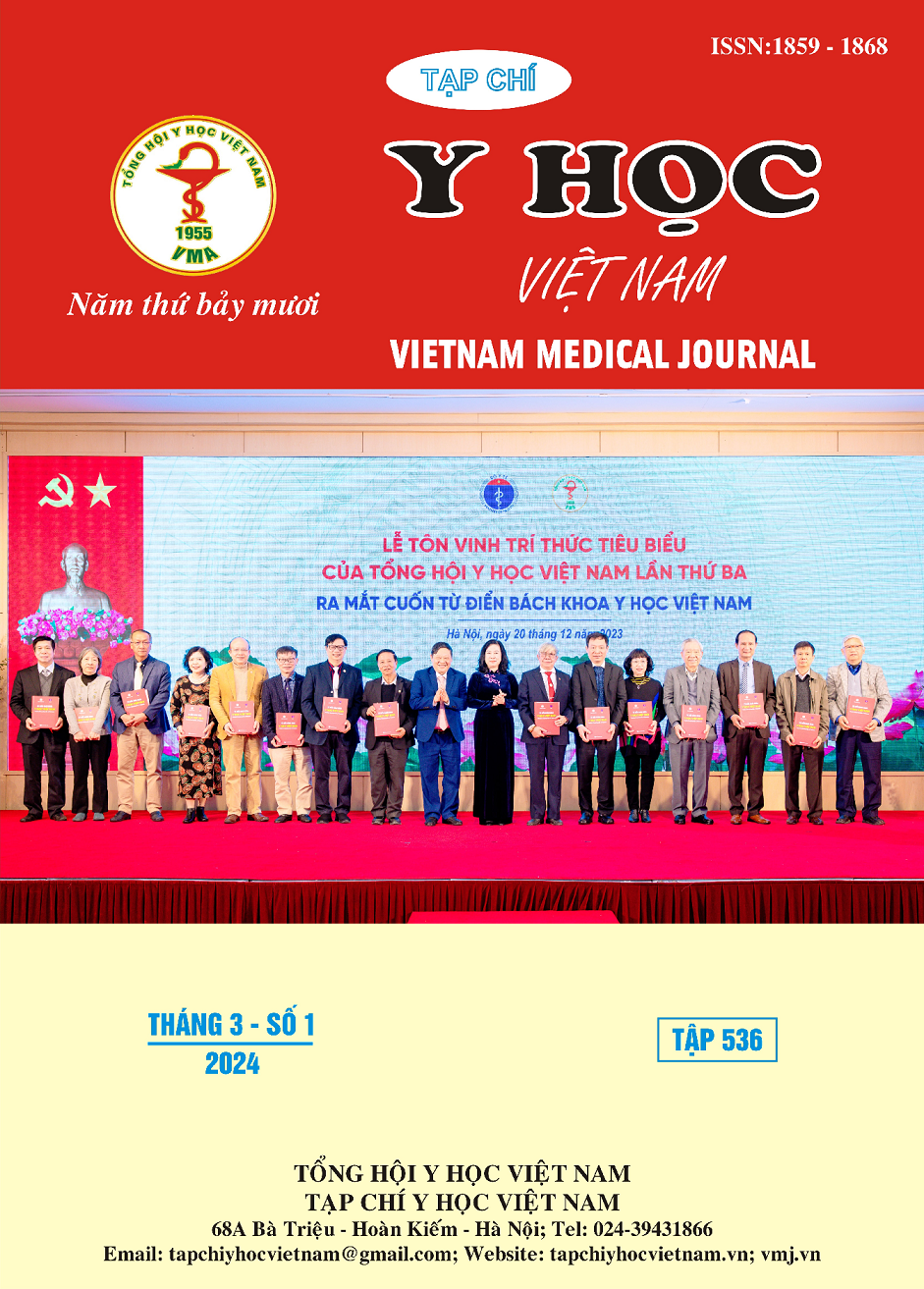EVALUATION OF THE COMBINATION OF CENTRAL CALCIFICATION SIGNS AND COMPLETE HETEROGENEOUS SINUS OPACITIES IN CT-SCANNER FOR THE DIAGNOSIS OF FUNGAL SINUSITIS
Main Article Content
Abstract
Purposes: The aim of this study was to evaluate the combination of central calcification signs and complete heterogeneous sinus opacities on computed tomography (CT) in the diagnosis of fungal sinusitis. Material and methods: Descriptive study on 70 patients with chronic rhinosinusitis examined at Hanoi Medical University Hospital during the period from January 2022 to July 2023. These patients were all had endoscopy and multi-slices CT scan of the sinuses, then had endoscopic sinus surgery and confirmed diagnosis of fungal sinusitis by post-operative fungal testing. The CT signs of central calcification and the complete heterogeneous sinus opacities were combined together and compared with post-operative fungal testing. Results: fungal sinusitis was diagnosed in 60/70 patients, accounting for 86%. On CT scan, the sign of central calcification had the sensitivity, the specificity, the accuracy, the positive predictive value and the negative predictive value for the diagnosis of fungal sinusitis of 88.3%; 20%; 78.6%; 86.9% and 22.2%, respectively. These values for the sign of complete heterogeneous sinus opacification were 80%; 20%; 71.4%; 85.7% and 14.3%, respectively. When combining these two signs, the sensitivity, the specificity, the accuracy, the positive predictive value and the negative predictive value for fungal sinusitis diagnosis were 68.3%; 60%; 67.1%; 91.1%, and 24%, respectively. Conclusion: Combining two CT signs of central calcification with complete heterogeneous sinus opacities slightly reduced the sensitivity and the diagnosis accuracy but significantly increased the specificity of diagnosing fungal sinusitis by CT.
Article Details
References
2. Hsiao CH, Li SY, Wang JL, Liu CM. Clinicopathologic and immunohistochemical characteristics of fungal sinusitis. J Formos Med Assoc Taiwan Yi Zhi. 2005;104(8):549-556.
3. deShazo RD, O’Brien M, Chapin K, Soto-Aguilar M, Gardner L, Swain R. A new classification and diagnostic criteria for invasive fungal sinusitis. Arch Otolaryngol Head Neck Surg. 1997;123(11):1181-1188.
4. Aribandi M et al. Imaging features of invasive and noninvasive fungal sinusitis: a review. Radiogr Rev Publ Radiol Soc N Am Inc. 2007; 27(5):1283-1296.
5. Ni Mhurchu E, Ospina J, Janjua AS, Shewchuk JR, Vertinsky AT. Fungal Rhinosinusitis: A Radiological Review With Intraoperative Correlation. Can Assoc Radiol J J Assoc Can Radiol. 2017;68(2):178-186.
6. DelGaudio JM, Swain RE Jr et al. Computed tomographic findings in patients with invasive fungal sinusitis. Arch Otolaryngol Head Neck Surg 2003; 129:236 – 40
7. Lê Trung Nguyên. Nghiên Cứu Tình Hình Viêm Xoang Do Nấm Tại BV TMH TP. Hồ Chí Minh Từ Năm 2020-2021. Luận văn thạc sỹ y học. Đại học Y dược TP Hồ Chí Minh; 2021.
8. Mai Quang Hoàn. Khảo Sát Đặc Điểm Lâm Sàng, Cận Lâm Sàng và Điều Trị Viêm Xoang Do Nấm Tại Bệnh Viện Chợ Rẫy. Luận văn thạc sỹ y học. Đại học Y dược TP Hồ Chí Minh; 2018.
9. Trần Nam Khang. Đánh Giá Kết Quả Điều Trị Viêm Xoang Do Nấm Bằng Phương Pháp Phẫu Thuật Nội Soi Tại Bệnh Viện TMH TP. Hồ Chí Minh. Đại học Y dược TP Hồ Chí Minh; 2018.
10. Jiang RS, Huang WC, Liang KL. Characteristics of Sinus Fungus Ball: A Unique Form of Rhinosinusitis. Clin Med Insights Ear Nose Throat. 2018;11:1179550618792254.


